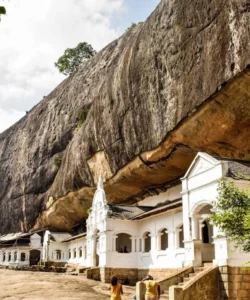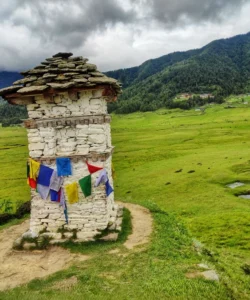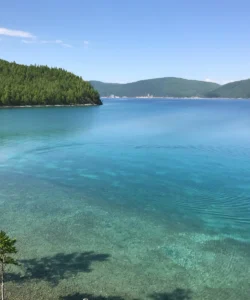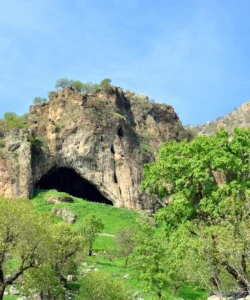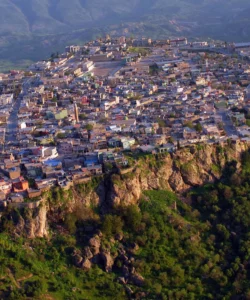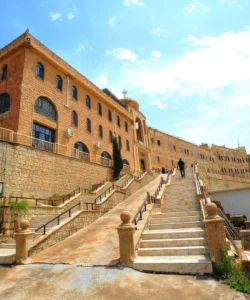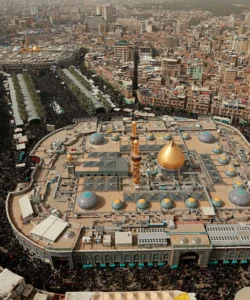The Iraqi Marshes, also known as the Mesopotamian Marshes, are a vast wetland ecosystem located in southern Iraq, within the floodplains of the Tigris and Euphrates rivers. This unique and ancient landscape is a natural wonder and a profound cultural symbol, famous for its biodiversity, its deep connection to Sumerian civilization, and its dramatic modern history of destruction and restoration.
Name: The Iraqi Marshes (Arabic: اهوار العراق, Ahwār al-ʻIrāq) or Mesopotamian Marshes.
Address: The marshes are primarily located in the governorates of Dhi Qar, Maysan, and Basra in southern Iraq.
How to Get There:
Travel to the Iraqi Marshes is currently extremely difficult and unsafe for general tourism due to political instability, security issues, and a lack of tourist infrastructure. The following information is for historical context and is not a recommendation for travel.
- By Air: The closest international airports are in Basra (BSR) and Baghdad (BGW). From either city, a long road trip would be required.
- By Road: The marshes are typically accessed from nearby cities like Nasiriyah, Al-Chibayish, or Amarah. Travel by car or taxi requires local knowledge and a security assessment.
- Within the Marshes: To explore the marshes, visitors would need to hire a local guide and a traditional reed canoe, known as a mashoof.
- Best Time to Visit: The cooler months from November to April are the best time to visit, but this is not currently advisable.
Landscape and Architecture:
The “architecture” of the Iraqi Marshes is a unique blend of natural and man-made elements, reflecting a distinct way of life that has existed for millennia.
- World’s Largest Inland Delta: The marshes are one of the world’s largest inland delta systems, formed by the convergence of the Tigris and Euphrates rivers. This creates a vast, flooded grassland ecosystem that is a rare sight in a hot, arid environment.
- UNESCO World Heritage Site: In 2016, a portion of the marshes, along with the adjacent archaeological sites of Ur, Uruk, and Eridu, was designated a UNESCO World Heritage Site under the name “The Ahwar of Southern Iraq: Refuge of Biodiversity and the Relict Landscape of the Mesopotamian Cities.” This recognized both the ecological and historical value of the area.
- Mud-Brick and Reed Structures: The traditional architecture of the Marsh Arabs, known as the Ma’dan, is a central feature of the landscape. They build intricate houses (mudhif), boats (mashoof), and even mosques entirely from woven reeds. This unique construction method is a living testament to a culture that has adapted to its environment for thousands of years.
- Rich Biodiversity: The marshes are a critical ecosystem, home to a diverse array of wildlife, including the endangered smooth-coated otter and the unique Basra reed-warbler. They also serve as a crucial stopover point for millions of migratory birds traveling between Eurasia and Africa.
- A Recovering Ecosystem: The landscape has undergone a dramatic transformation. In the 1990s, the marshes were almost completely drained by the regime of Saddam Hussein for both military and political reasons. After 2003, local communities began to dismantle the dams, and the marshes have since been partially reflooded and are in a state of slow recovery, though they face new threats from drought and upstream dams.
What Makes It Famous:
- “The Garden of Eden”: The Iraqi Marshes are famous for being a possible real-world location for the biblical Garden of Eden. This connection gives the region a deep, mythic, and religious significance to millions of people worldwide.
- Home of the Marsh Arabs: The marshes are the historic homeland of the Marsh Arabs, a unique ethnic group with a distinct culture, traditions, and way of life that has remained largely unchanged for millennia. They are famous for their remarkable skill in building with reeds and their deep knowledge of the wetland ecosystem.
- Symbol of Environmental Devastation and Restoration: The marshes’ fame is rooted in their modern story of being almost completely destroyed by Saddam Hussein and the subsequent heroic efforts of the local population and international community to restore them. This makes them a powerful symbol of both environmental tragedy and the resilience of nature.
- Archaeological Link to Ancient Sumeria: The marshes are directly linked to the birth of the world’s first cities. The ancient Sumerian cities of Ur, Uruk, and Eridu, now UNESCO World Heritage Sites, were built on islands within this marshy landscape, and archaeological evidence testifies to the centrality of the marshes to the Sumerian way of life.
- Biodiversity and Ecological Importance: The marshes are a global ecological treasure, vital for the survival of many species of birds and other animals. Their recent return to life is a significant conservation success story.
Differences from Some Other Wonders:
- A Natural and Cultural Wonder: While many wonders are either natural (e.g., Mount Everest) or cultural (e.g., the Great Wall of China), the Iraqi Marshes are a unique combination of both. Their “wonder” is the fusion of a specific natural ecosystem with the culture and way of life it has supported for thousands of years.
- Fluid and Dynamic Landscape: Unlike a static monument like a pyramid or a ziggurat, the marshes are a fluid, dynamic, and ever-changing landscape. Their size and shape change with the seasons and with the flow of the rivers, making them a “living” wonder in a literal sense.
- Modern Story of Survival: The marshes are not a ruin from the distant past but a site whose modern history of near-total destruction and subsequent partial recovery is a central part of its fame. This narrative of conflict, environmental crime, and restoration is a defining and unique aspect of its identity.
- Focus on a Specific People Group: Its identity is inextricably tied to the Marsh Arabs and their unique culture, which has adapted to life on the water for centuries. This human element is a central part of what makes the marshes a wonder.
- An “In Danger” and Recovering Site: The marshes remain a fragile ecosystem, threatened by drought and upstream dams. The ongoing struggle for their survival is a continuous story, making the “wonder” not a thing of the past but an ongoing, active challenge.
The Iraqi Marshes Photos:

































